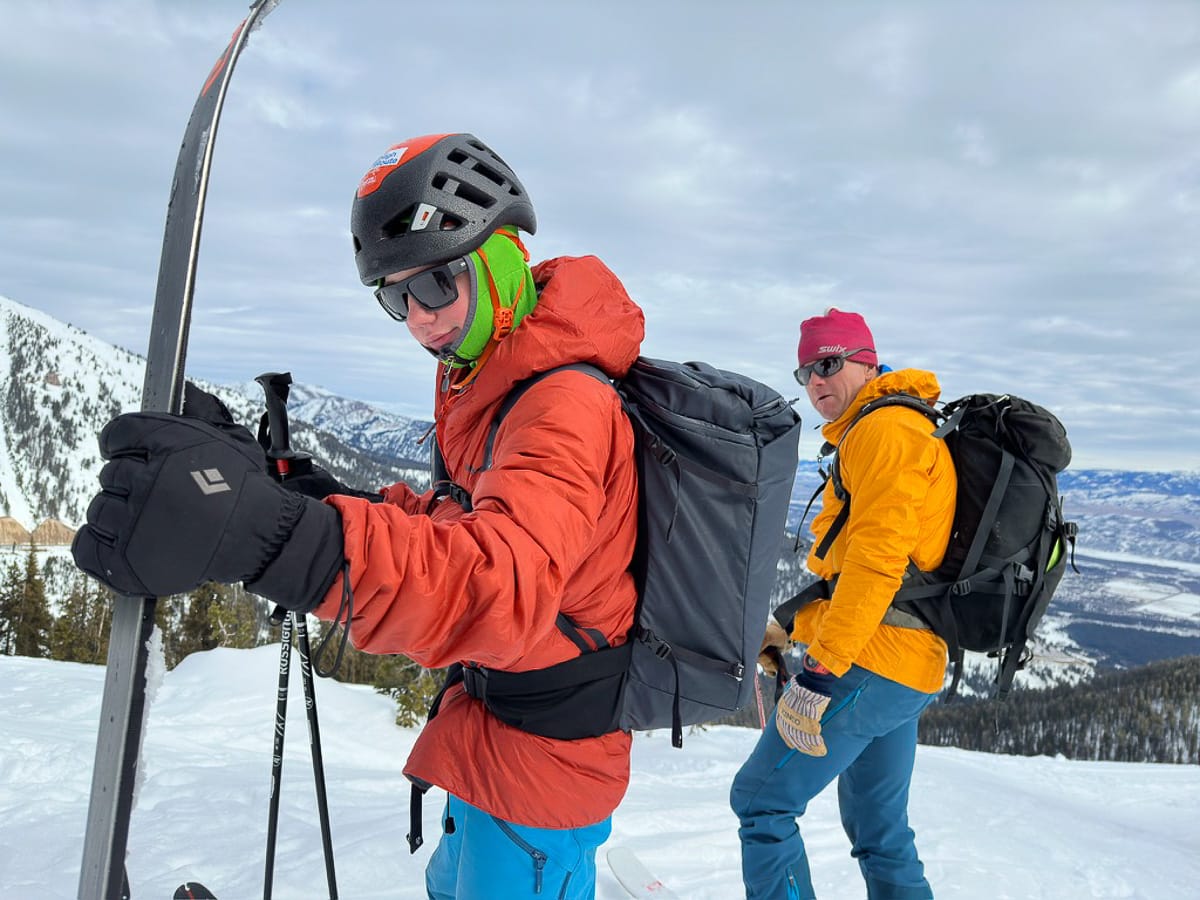Transition time, let’s get into it. On any given run, generally, you transition twice. At the bottom, apply skins, maybe peel a layer, and munch on a snack. And atop the line, you de-skin, add a layer and rehydrate. I think we all can agree that transition times vary.
Over the summer, I began a dialogue with a newish backcountry skier. After our chat, he sent along several questions worth considering. One question, as you may have guessed, was about transitions. Here’s what he asked:
“How important are transition times? I was told by one of my AIARE instructors that a two-minute transition time was something I should be working towards to be considered a partner with good etiquette. After a season of touring, I’m… nowhere close. How worried should I be about this? I’m not exactly that interested in being much of a speed demon, so I don’t feel a ton of urgency, but at the same time, I do want to prioritize being what most folks would consider a good partner?“
Here’s a disclaimer, and I may be speaking out of turn, I could ask, but I’m guessing AIARE does not have a curriculum dictating transition times and their relationship to etiquette. This comment from the avalanche educator was likely personal philosophy.
There are several responses to this question. Let’s set up some scenarios. I’d like to begin with this: the importance of the time part. In short, if timing for snow stability isn’t a concern, or loss of daylight, or low-temperature related maladies can be put aside, and the group’s vibe is good to excellent, then transition times aren’t necessarily important.
Backcountry Transitions: The First-Timer
Transitioning is complex. Human dynamics are also complex. A newish backcountry skier/rider should practice on-snow transitions before heading into the backcountry with partners. Sure, etiquette may be part of it, but personal frustration will be, too, if you are faffing with gear. Learn how to build efficiencies, like maybe leaving skis on while removing skins or figuring out a streamlined re-buckle system. It is OK to refine these skills once you are beyond first-timer status, but practicing when there is no time pressure is preventative medicine.
Even after practicing on your first tours, it’s more than OK to communicate that your transitions are a work in progress. Anyhow, if you feel time pressure to perform in a group, and it feels like negative energy, it probably is—that type of vibe is poor etiquette, too.






Leave a Reply
You must be logged in to post a comment.